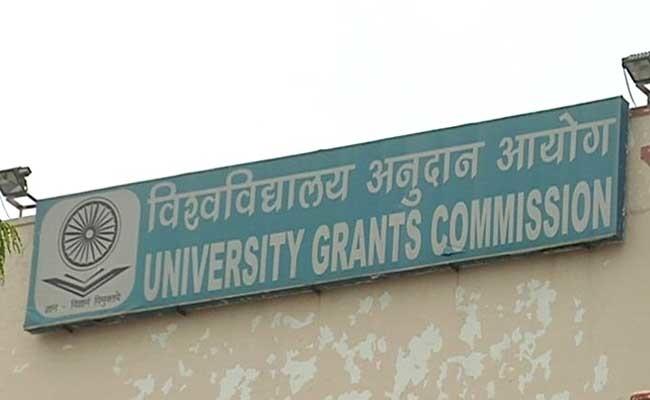Killing UGC: One More Step Towards Tiered Higher Education and its Privatisation

The fate of University Grants Commission (UGC) seems to be finally sealed with the Central government’s Higher Education Commission of India Act 2018 (draft) repealing the UGC Act, 1956. Attempts to replace UGC with a new body to regulate Higher Educational Institutions (HEIs) had been underway since United Progressive Alliance (UPA)-II. Though most would agree that there was a serious need to reform UGC and its functioning, the draft Act does not seem to address some of the serious concerns facing the HEIs. In fact replacement of the UGC with a new commission arises from the Modi government’s need to establish a tiered system of higher education and is another push towards its privatisation.
Giving ‘autonomy’ to institutions is one of the key points of the proposed Higher Education Commission of India (HECI). The Ministry of Human Resources and Development’s (MHRD) press note on the draft Act—“less government and more governance”— is a clear ideological indication of further reduction of the government’s role in higher education and the push towards privatization of HEIs.While autonomy by itself is not a bad idea and universities need autonomy to function effectively, it has been seen that autonomy for HEIs has come with a package of cost cutting, raising fees, starting self-financed courses, etc. This trend has continued during both, UPA and BJP-led NDA governments. In short, autonomy for HEIs in India has meant that the government abdicates its financial responsibility towards universities and colleges. To cite a recent example, the Ministry of Human Resources and Development (MHRD), granted graded autonomy to 60 HEIs this March. This would mean that these institutions can now start new courses, off campus centres, hire foreign faculty, enrol foreign students, give incentive based emoluments to the faculty among other things. What the MHRD did not mention in its press release was that these HEIs will soon have to generate their own funds for maintenance and expansion.
Also to be noted here is that the power of grants/funding held by UGC, has been taken away and given to the MHRD, but there is no clarity on the issue. The MHRD’s press note merely mentions that the new commission would only focus on academic issues and the MHRD will handle grants. Interestingly, the draft Act itself is completely silent on the issue of grants. It is ironical that the commission’s focus is on ‘autonomy’ but the funding power has now been vested to the Centre. Clearly this is autonomy without government funds. Additionally, MHRD’s lack of clarity on the new funding pattern leaves scope for the Centre to manoeuvre the HEIs’ funding.
The draft Act states that the “Commission shall take steps for promoting the quality of academic instruction and maintenance of academic standards” (p. 6). However, there has been a reduction in the budgetary allocations for higher education and universities under the Modi government. Drastic cuts in Plan funds as well as maintenance grants from the Centre have put universities under severe financial stress. Frequent fee hikes, reduced and delayed disbursement of fellowships, seat cuts, etc. put the students’ future in question. It specially affects those students who come from disadvantaged sections. Without addressing the financial quagmire, in which most public HEIs find themselves in, it is doubtful how the new Commission will “maintain academic quality”. To talk about improving academic quality without increasing the allocations to higher education is to simply gloss over the realities of the sector.
Also Read: Higher Education Commission will Affect Autonomy of Institutions, Say Experts
Apart from being another concrete step towards the privatisation of higher education, the decision of dismantling UGC and forming a new commission that primarily focuses on autonomy, regulation, and quality, is the result of a policy prescription of the government’s think tank, NITI Aayog. One look at the NITI Aayog’s “Three Year Action Agenda 2017-18 to 2019-20” (2017), and it will be clear that this decision was necessitated in order to establish a tiered system of higher education.. The report’s section on higher education listed designation of world class universities, autonomy for top colleges, and reform of the regulatory system with a tiered system of universities, as the first three action points to be completed by 2020.
The idea is to identify 20 public universities which will be kept out from the regulatory system and be autonomous. A tiered funding model based on performance and outcomes would be established for these universities in order to make them ‘world-class’. The second action point mentions freeing the established colleges from the control of their universities and make them autonomous, while the third action point deals directly with the overhaul of UGC and establishment of a tiered system of universities.
The report argues for a three-tiered system of universities, whereby the first tier research universities would be given full autonomy and performance-based resources over time. These universities would also be expected to compete for research projects from the industry. The second tier universities would be those with employment-focused education and are subjected to light regulation. The third and last tier would consist of poorly performing universities and whose main function would be to ensure that higher education is available to all, these universities would be the most regulated. The tiered system would provide the performing universities with the option of moving up the tier and provide closure in case of repeated poor performance.
Now, a legal framework was required to give this tiered system legal cover along with making sure that it was not reversed. The report states, “A key drawback under the UGC Act is that it would not provide sufficient assurance to universities of their status within a particular tier. The fear that the status may be changed on the whim of an administrator would remain. An eventual change in the law would be required.” (p. 139). Thus, we see that the end of UGC and formation of a new commission arises directly from the government’s aim to establish a three tiered structure of higher education.
In the name of autonomy and academic quality, the Modi government is moving towards the privatisation of higher education. The current reform aims to establish a tiered system of higher education with a clear class division: the first tier for the elite, the second for the middle class and the third for the masses. If implemented, on one hand, we would have ‘world-class’ universities with full autonomy and exorbitant fees, and on the other hand, a mass of common students in the third tier having no attention from the government except perhaps the sword of closure of their institutions hanging on them. The current reform is an attempt to further absolve the State from its financial responsibility towards higher education. Whereas, the need of the hour is a meaningful reform of higher education that can address concerns of access, equity, affordability, proper funding mechanism and make efforts to increase government allocations.
*Saqib Khan is a PhD student at the Tata Institute of Social Sciences, Mumbai
Get the latest reports & analysis with people's perspective on Protests, movements & deep analytical videos, discussions of the current affairs in your Telegram app. Subscribe to NewsClick's Telegram channel & get Real-Time updates on stories, as they get published on our website.
























